 1999 Opel Astra G Dimensions, Size & Specs
1999 Opel Astra G Dimensions, Size & SpecsMeasurements of the 1999 Opel Astra G, engineered for optimal performance and comfort
| Dimensions | |
|---|---|
| Length: | 4110 mm161.8 in13.5 ft |
| Width: | 1709 mm67.3 in5.6 ft |
| Width (Opened Mirrors): | 1989 mm78.3 in6.5 ft |
| Height: | 1405-1425 mm55.3-56.1 in4.6-4.7 ft |
| Ground Clearance: | 130-160 mm5.1-6.3 in0.4-0.5 ft |
| Trunk Capacity: | 370 liter13.1 cu ft |
| Trunk Capacity (Max): | 1180 liter41.7 cu ft |
| Weight Specifications | |
| Curb Weight: | 1050-1250 kg2315-2756 lbs |
| Maximal permitted Weight: | 1515-1770 kg3340-3902 lbs |
| Roof Load: | 100 kg220 lbs |
| Tire Specifications | |
| Rims Sizes: | Other Rims:
|
| Tire Sizes: |
|
The Opel Astra G, produced from 1998 to 2002 with the 1999 model year as a representative example, is a compact hatchback known for its balanced design and practical dimensions. Measuring 4110 mm (161.8 inches) in length and 1709 mm (67.3 inches) in width without mirrors, the car extends to 1989 mm (78.3 inches) width with mirrors opened, making it adequately sized for urban and suburban driving. Its height ranges between 1405 mm to 1425 mm (55.3 to 56.1 inches), providing a low but comfortable stance. The ride height or ground clearance varies from 130 mm to 160 mm (5.1 to 6.3 inches), striking a balance between sporty handling and everyday usability.
Weight-wise, the curb weight spans from 1050 kg to 1250 kg (2315 to 2756 lbs), depending on specific configurations and trims, with a maximum allowed weight (gross vehicle weight) between 1515 kg and 1770 kg (3340 to 3902 lbs), supporting a good payload for a compact hatchback. The Astra G offers practical luggage space of 370 liters (13.1 cubic feet) with seats in use, which expands substantially to 1180 liters (41.7 cubic feet) when the rear seats are folded down, showcasing its versatility for carrying larger amounts of cargo. A roof load capacity of 100 kg (220 lbs) enhances its utility for additional storage.
The vehicle comes with a diverse range of tire and rim sizes to suit different performance and aesthetic needs, including rims from 14 to 17 inches in diameter and compatible tires ranging from 175/70 R14 to 215/40 R17 V, enabling various driving experiences from efficient daily commuting to sportier handling setups.
Overall, the Opel Astra G hatchback produced between 1998 and 2002 offers a practical compact car option with a well-rounded profile in dimensions, adaptable cargo capacity, and weight suitable for a broad spectrum of drivers, balancing city agility with functional space.
Discover the standout features that make the 1999 Opel Astra G a leader in its class
Have a question? Please check our knowledgebase first.
The Opel Astra G hatchback, produced between 1998 and 2002, features a length of 4110 mm (161.8 inches), a width of 1709 mm (67.3 inches), and a height ranging from 1405 to 1425 mm (55.3 to 56.1 inches). When considering the width with opened mirrors, the car measures 1989 mm (78.3 inches). These dimensions position the Astra G as a compact yet practical hatchback suitable for urban and suburban driving while providing ample interior space for passengers and luggage.
The Opel Astra G offers a luggage capacity of 370 liters (13.1 cubic feet) with the rear seats in their upright position, providing a reasonable amount of space for everyday shopping or travel needs. When the rear seats are folded down, the luggage volume expands significantly to 1180 liters (41.7 cubic feet), allowing for the transport of larger items or increased cargo volume. This versatility makes the Astra G suitable for drivers needing flexible cargo space without moving to a larger vehicle category.
The ground clearance of the Opel Astra G varies between 130 and 160 mm (5.1 to 6.3 inches), depending on the specific model and suspension setup. This moderate ride height balances driving comfort and practicality, allowing the vehicle to handle typical road conditions without difficulty. Additionally, the roof load capacity is rated at 100 kg (220 lbs), meaning the Astra G can safely carry rooftop cargo such as luggage boxes or sports equipment without compromising safety or vehicle integrity.
The Opel Astra G has a curb weight that ranges from 1050 to 1250 kg (2315 to 2755 lbs), depending on engine options, trim levels, and included equipment. This relatively light weight helps the Astra G maintain good fuel economy and nimble handling characteristics, making it a responsive and efficient hatchback. Lighter vehicles typically accelerate quicker and have better braking performance, contributing to an engaging driving experience while maintaining overall stability.
Yes, the Opel Astra G hatchback fits comfortably within the dimensions of a standard home garage. With a length of 4110 mm (161.8 inches) and a width of 1709 mm (67.3 inches) with mirrors folded, most typical garages that accommodate vehicles around 2.5 to 3 meters wide and 5 to 6 meters deep will provide ample space. However, the wing mirror width of 1989 mm (78.3 inches) means mirror folding is advisable to avoid scraping in narrower spaces. The car’s height ranging from 1405 to 1425 mm (55.3 to 56.1 inches) poses no issue for standard garage door clearances.
Compared to the Astra F generation, the Astra G (1998-2002) is somewhat larger and more refined in terms of dimensions. The Astra G has a length of 4110 mm (161.8 inches), which represents a modest increase, enhancing interior space and luggage capacity. Its width of 1709 mm (67.3 inches) also represents a slight widening to improve cabin comfort. Overall, these dimensional increases correspond with improvements in safety, interior ergonomics, and aesthetic styling, making the Astra G a more modern and competitive compact hatchback compared to the Astra F.
When compared with similar hatchbacks from the late 1990s and early 2000s, such as the Volkswagen Golf Mk4 and Ford Focus Mk1, the Opel Astra G offers competitive dimensions and cargo space. Its 4110 mm length and 1709 mm width place it squarely in the compact class, with luggage capacity of 370 liters expandable to 1180 liters with seats folded, which is comparable or slightly better than some rivals. This flexibility in cargo volume makes it a versatile choice for buyers seeking a practical hatchback with both daily usability and weekend hauling capabilities.
The Opel Astra G was equipped with a variety of rim sizes ranging from 14 to 17 inches, including options such as 6J x 14 ET34, 6J x 15 ET49, 6.5J x 15 ET45, and 7.5J x 17 ET45, among others. Corresponding tire sizes commonly ranged from 175/70 R14 up to 215/40 R17 V. Smaller rims with higher-profile tires typically provided a more comfortable ride, absorbing road imperfections better, while larger rims with lower-profile tires contributed to improved handling and grip, particularly in sportier trims or optional packages. This selection allowed customers to tailor their Astra G’s performance to their preferences.
The maximum weight capacity, or gross vehicle weight, of the Opel Astra G ranges from 1515 to 1770 kg (3340 to 3900 lbs), depending on the model variant and equipment. This figure includes the vehicle's curb weight plus passengers, luggage, and any additional cargo or modifications. Staying within this limit is crucial for maintaining optimal vehicle performance, safety, and legal compliance. It ensures that the suspension, braking, and engine systems operate within their designed capabilities.
Buyers of the Opel Astra G hatchback valued its blend of compact size, practicality, and European styling. It offered a spacious yet manageable vehicle for urban and family use, efficient engine options, and a reputation for reliability. The versatility of the hatchback design, including ample luggage space and comfortable interiors, met the needs of many drivers. Furthermore, the Astra G was often praised for its balanced handling, reasonable maintenance costs, and value for money, making it a competitive choice in the compact car market during its production years from 1998 to 2002.
Discover similar sized cars.
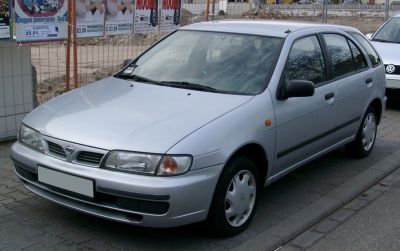
| Production: | 1995-2000 |
|---|---|
| Model Year: | 1995 |
| Length: | 4120 mm162.2 in |
| Width: | 1690 mm66.5 in |
| Height: | 1396 mm55.0 in |

| Production: | 2004-2010 |
|---|---|
| Model Year: | 2004 |
| Length: | 4170-4223 mm164.2-166.3 in |
| Width: | 1892 mm74.5 in |
| Height: | 1442 mm56.8 in |
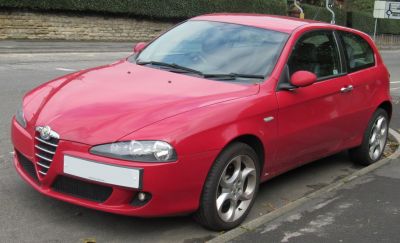
| Production: | 2004-2010 |
|---|---|
| Model Year: | 2004 |
| Length: | 4170-4223 mm164.2-166.3 in |
| Width: | 1892 mm74.5 in |
| Height: | 1442 mm56.8 in |
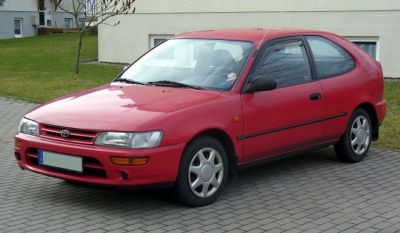
| Production: | 1992-1997 |
|---|---|
| Model Year: | 1993 |
| Length: | 4059-4095 mm159.8-161.2 in |
| Width: | 1685 mm66.3 in |
| Height: | 1380 mm54.3 in |
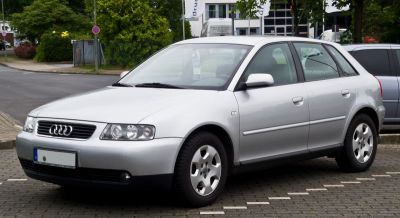
| Production: | 2000-2003 |
|---|---|
| Model Year: | 2001 |
| Length: | 4152 mm163.5 in |
| Width: | 1735 mm68.3 in |
| Height: | 1427 mm56.2 in |
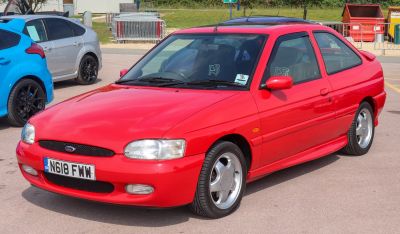
| Production: | 1995-1999 |
|---|---|
| Model Year: | 1995 |
| Length: | 4104 mm161.6 in |
| Width: | 1691 mm66.6 in |
| Height: | 1398 mm55.0 in |
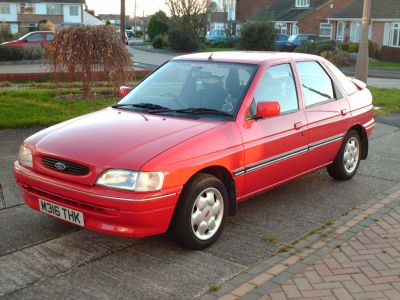
| Production: | 1991-1996 |
|---|---|
| Model Year: | 1993 |
| Length: | 4036-4211 mm158.9-165.8 in |
| Width: | 1692-1738 mm66.6-68.4 in |
| Height: | 1364-1450 mm53.7-57.1 in |

| Production: | 1997-2005 |
|---|---|
| Model Year: | 1997 |
| Length: | 4053 mm159.6 in |
| Width: | 1660 mm65.4 in |
| Height: | 1357 mm53.4 in |
